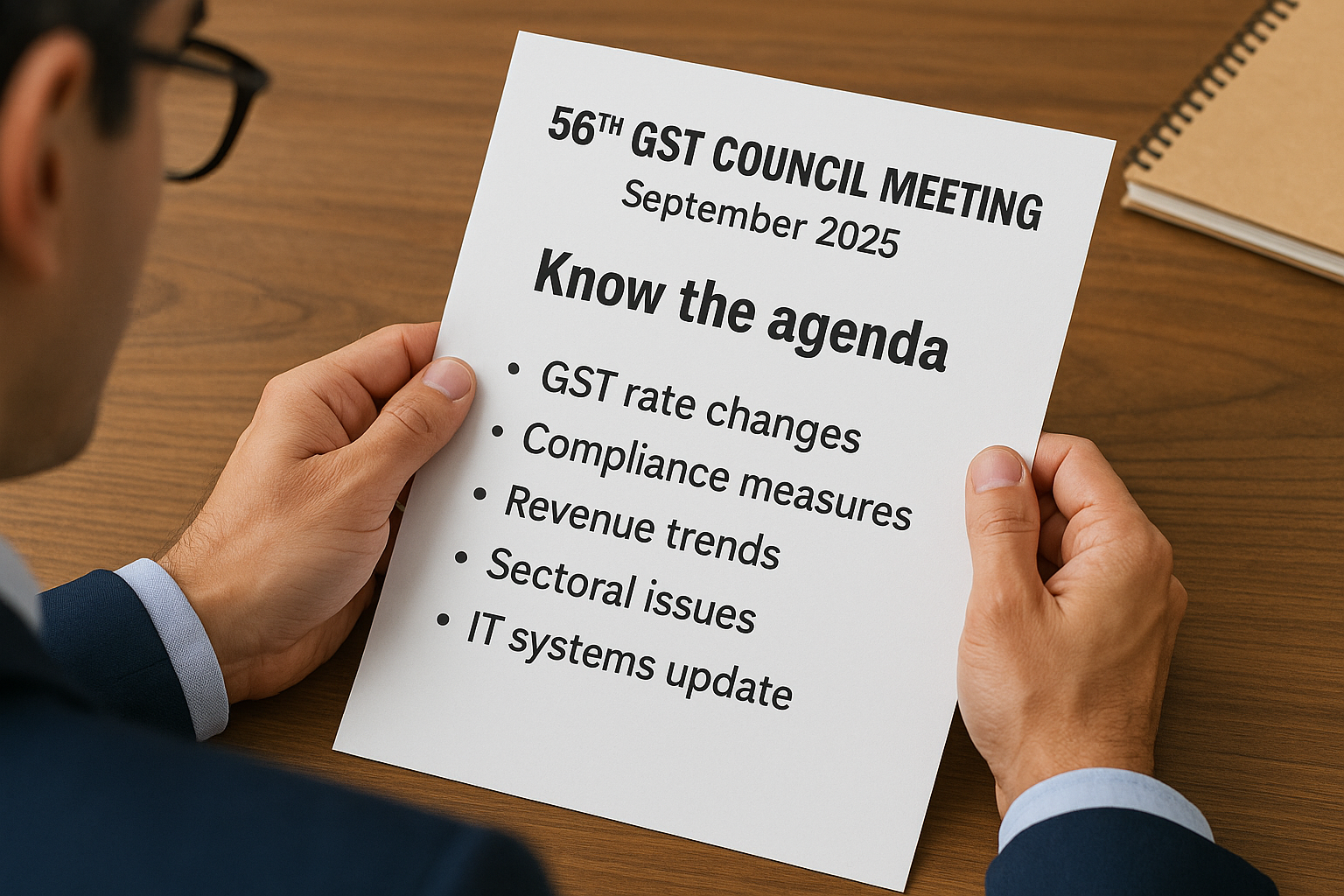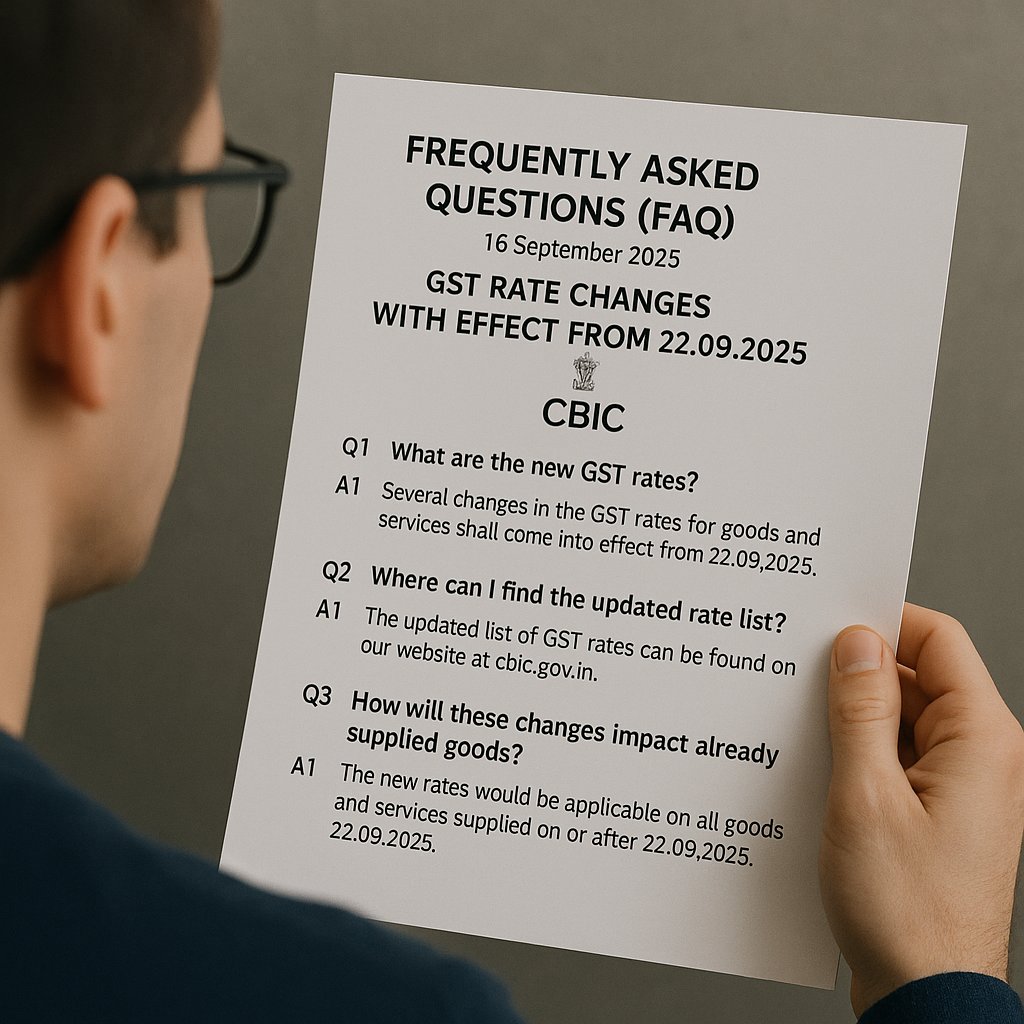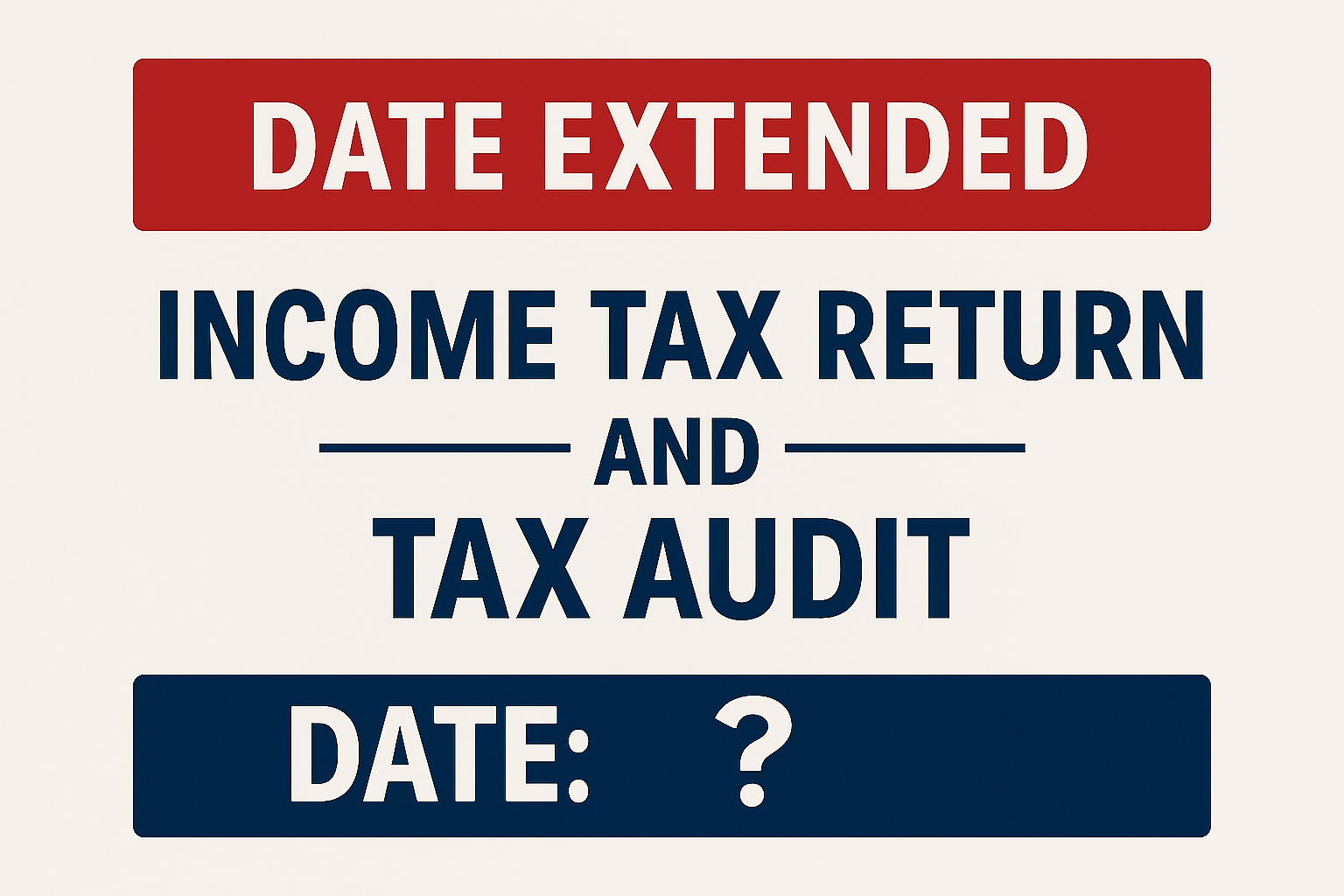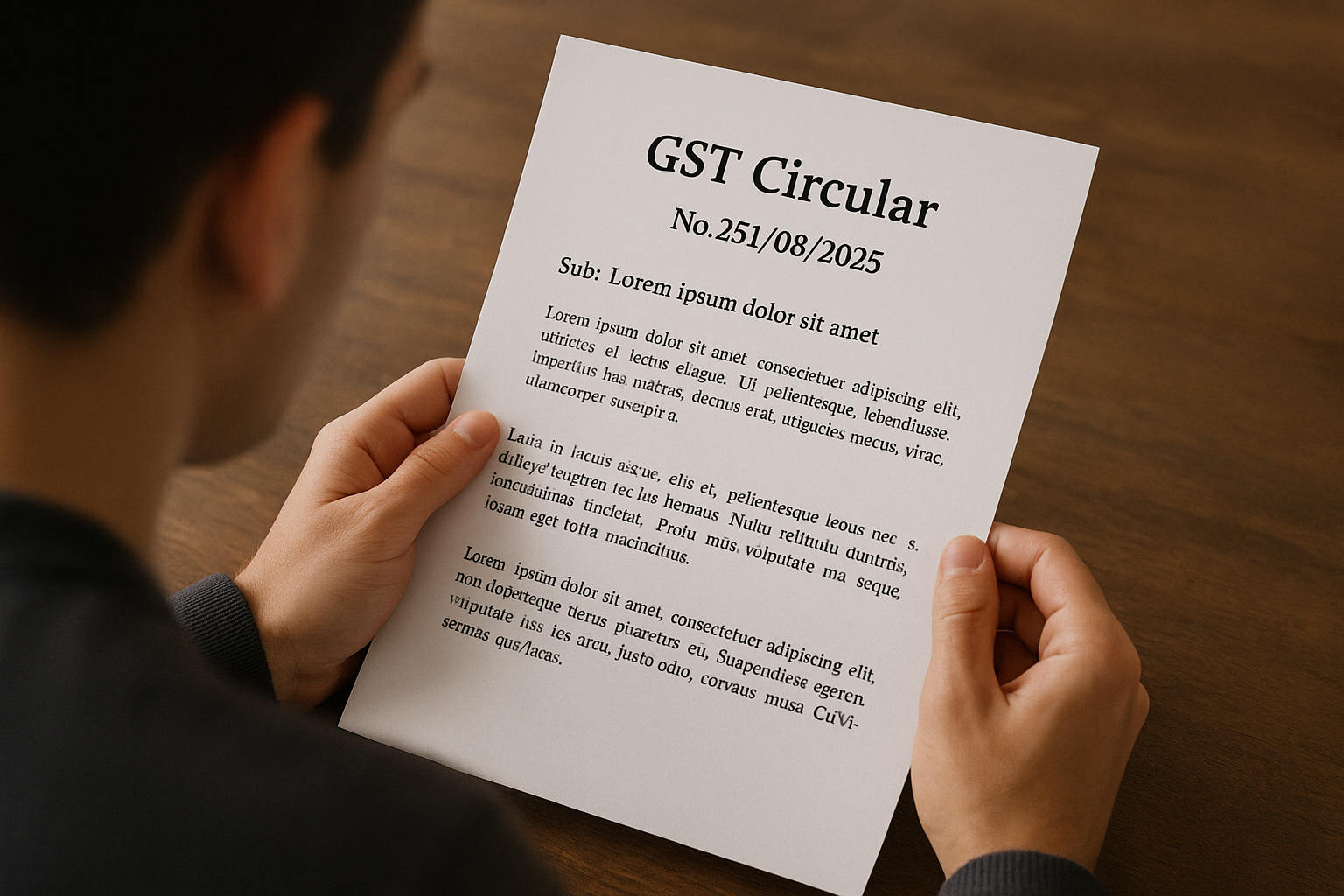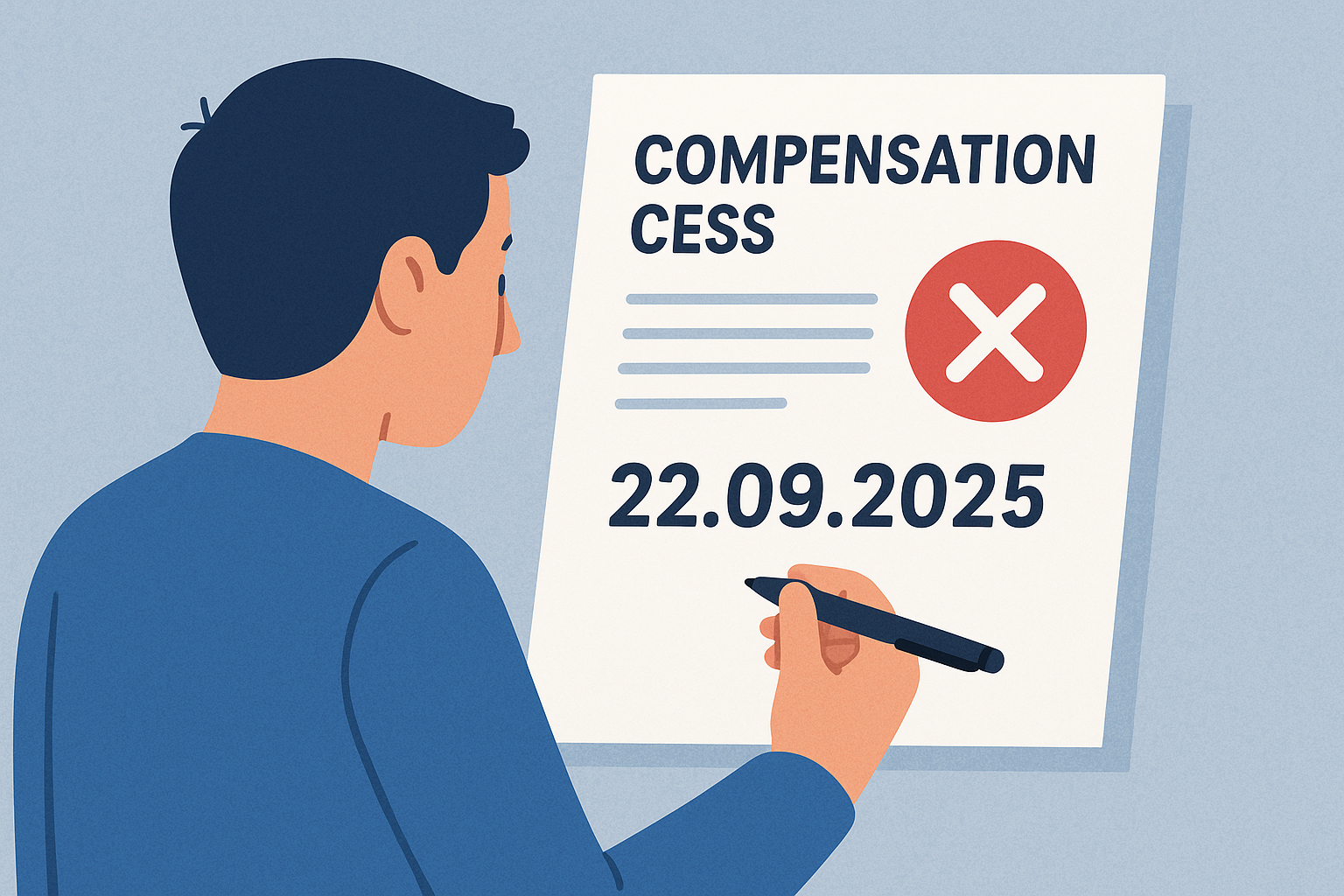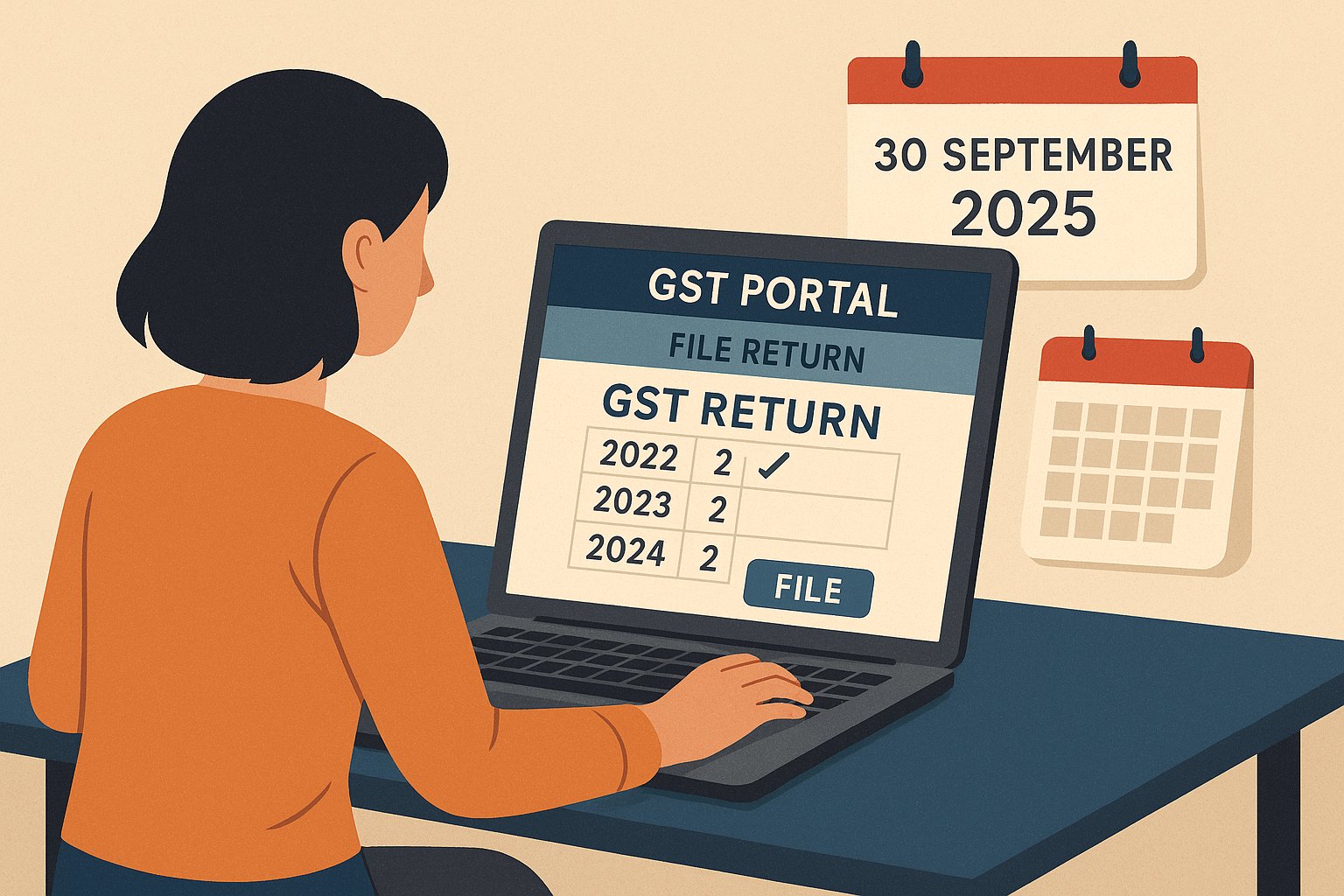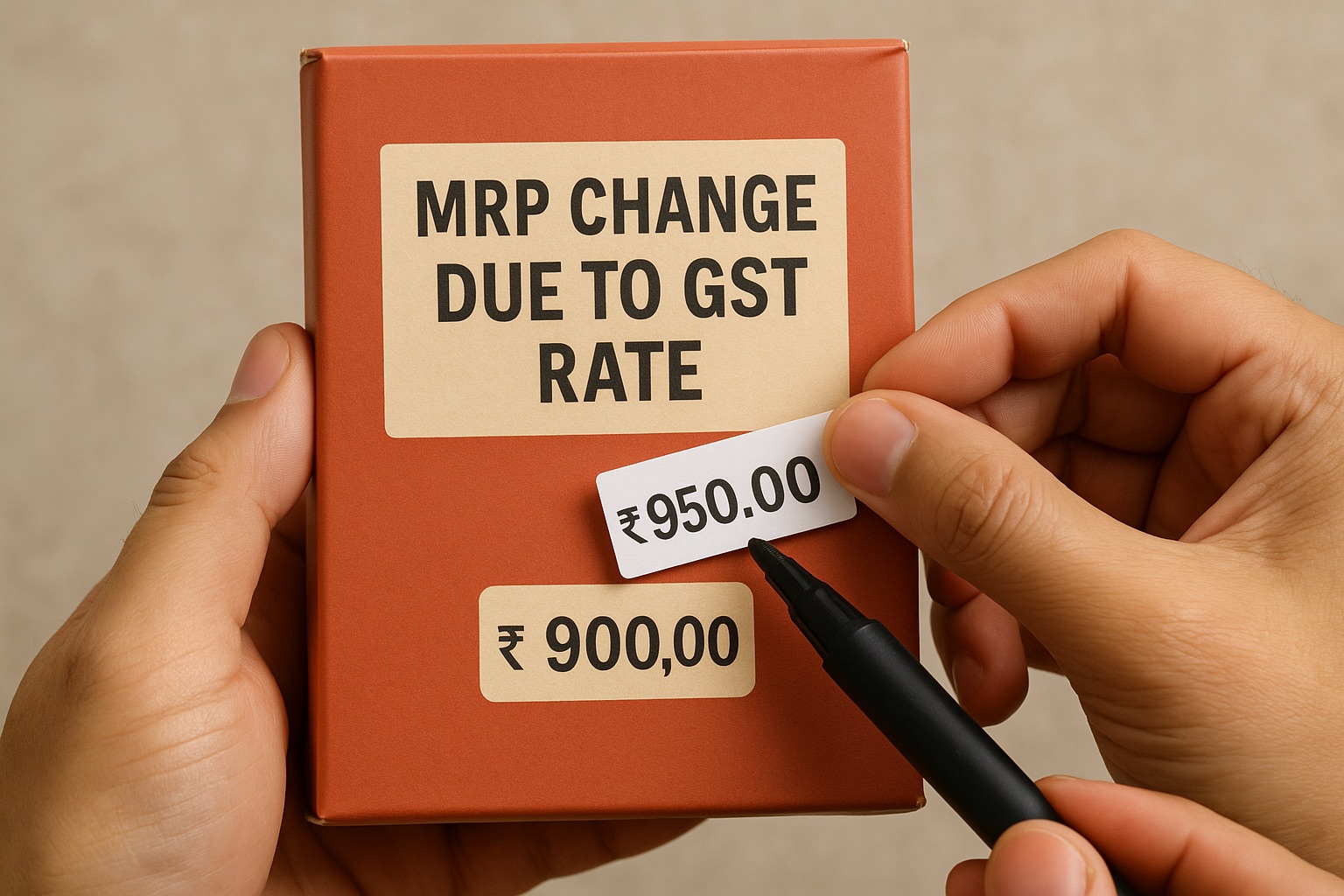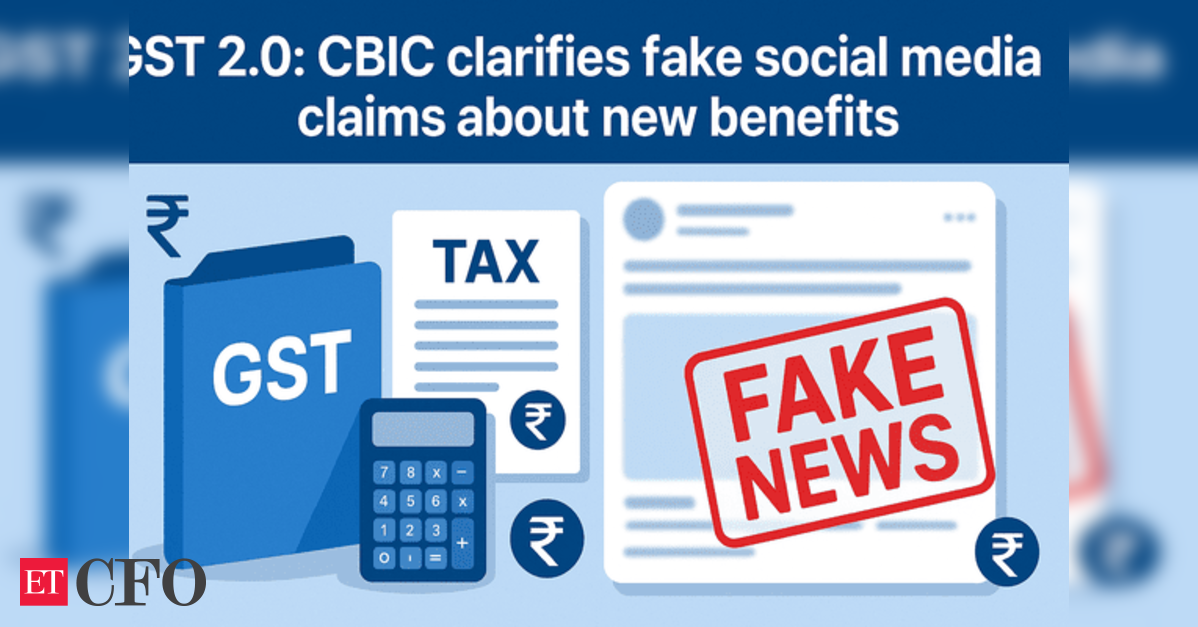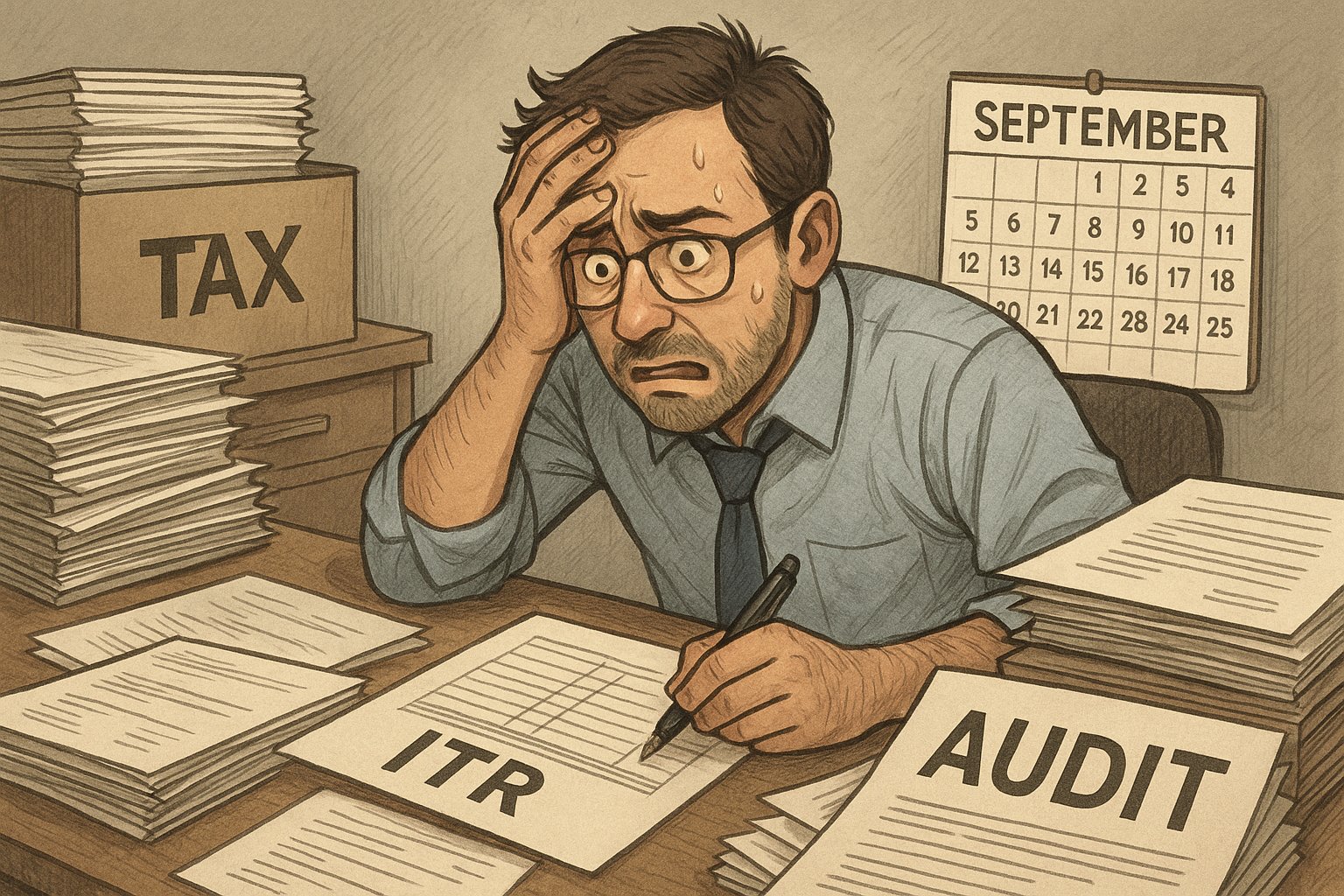The Goods and Services Tax (GST) regime, introduced in July 2017, has gone through multiple changes to streamline compliance, reduce disputes, and balance revenue needs of the Centre and States. Over the years, the GST Council—India’s apex decision-making body on indirect taxes—has played a critical role in shaping policy.
The 56th GST Council meeting, scheduled for 3rd and 4th September 2025 in New Delhi, is being considered a milestone in GST 2.0 reforms. With crucial decisions expected on tax rate rationalisation, relief on essential goods, insurance premiums, and compliance simplification, this meeting is set to have a direct impact on both businesses and consumers.
Background: Why This Meeting is Significant
For several years, businesses and policy experts have been advocating for:
- Simplification of GST rates to reduce disputes and compliance burden.
- Lower tax rates on essentials such as food, clothing, and household items.
- Relief in sectors like insurance and healthcare, which are currently taxed at a high 18%.
- Ease of compliance with automated refunds and pre-filled returns.
With economic growth, inflationary pressures, and the need to balance state revenues, the GST Council’s upcoming meeting is expected to finalize key reforms before the festive season.
Key Agenda Items of the 56th GST Council Meeting
1. GST Rate Rationalisation – Moving Towards Two-Slab Structure
- Proposal to move to a simplified GST rate system with two main slabs: 5% and 18%, and a 40% rate reserved for sin goods like tobacco and pan masala.
- Nearly all goods taxed at 12% may shift to 5%, while most items in the 28% category may shift to 18%.
- This reform is aimed at reducing confusion, cutting litigation, and making GST more taxpayer-friendly.
2. Relief for Essential Goods – Food, Textiles & FMCG
- All food and textile items may be brought under the 5% GST slab.
- Packaged food, household essentials, and FMCG goods could see lower rates, making them more affordable for consumers.
- This move will directly benefit the middle class and reduce inflationary pressure on essential commodities.
3. Insurance Premiums – Lower Tax on Health & Life Cover
- The Council may decide to exempt or reduce GST on health and life insurance premiums.
- Currently, these services attract 18% GST, which makes personal insurance policies expensive.
- If approved, this will boost insurance penetration and provide relief to households, especially the salaried and middle-income segment.
4. Compliance Simplification – GST 2.0
- Pre-filled GST returns to reduce manual errors and compliance burden.
- Automated refunds to address liquidity issues faced by exporters and small businesses.
- Reduction in procedural complexities and classification disputes, ensuring greater transparency and ease of doing business.
5. Compensation Cess – Future Roadmap
- Review of the GST compensation cess, which was originally levied to compensate states for revenue loss after GST implementation.
- The Council may decide whether to extend, phase out, or restructure the cess.
- This decision is vital for maintaining Centre-State fiscal balance.
6. Sector-Specific Reforms
- Inverted duty structure affecting industries like textiles, fertilizers, and footwear may be corrected to reduce refund-related disputes.
- A uniform 5% GST rate on commercial drones is also under consideration to eliminate classification issues and encourage the drone industry.
Expected Impact of the 56th GST Council Meeting
- Consumers – Likely to benefit from cheaper essentials (food, clothing, FMCG) and reduced tax burden on insurance.
- Businesses – Simplified GST rates will reduce compliance costs and classification disputes.
- Exporters & SMEs – Faster refunds and automation will improve liquidity.
- States – The compensation cess decision will impact their revenue planning.
- Overall Economy – Lower rates on essentials may control inflation, while simplification will make GST more efficient and business-friendly.
The 56th GST Council meeting (September 2025) is expected to be one of the most crucial in recent years. With proposals for rate rationalisation, relief on essentials, tax exemption on insurance premiums, and compliance reforms, the meeting could mark the beginning of a new simplified GST era in India.
For taxpayers, businesses, and policymakers alike, the outcomes of this meeting will define how GST evolves in the coming decade. If implemented, these reforms will bring much-needed relief to consumers, improve compliance for businesses, and ensure sustainable revenue for states—fulfilling the promise of a truly “Good and Simple Tax”.
Visit www.cagurujiclasses.com for practical courses
